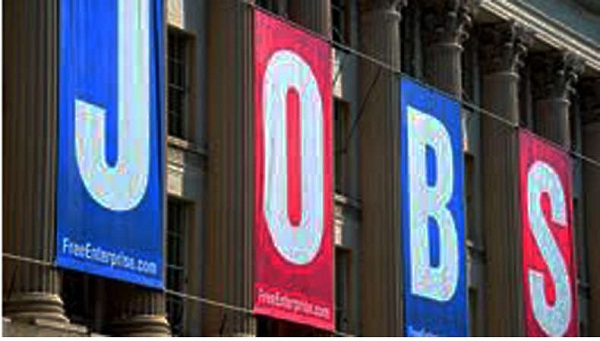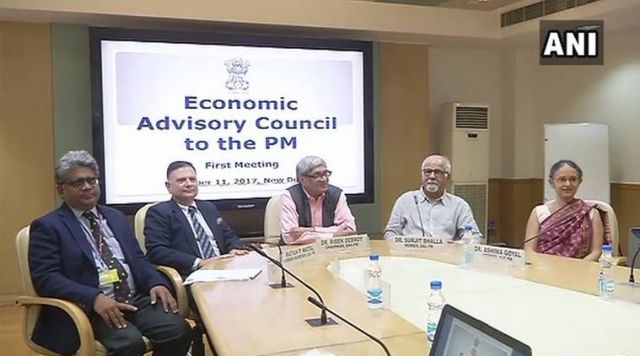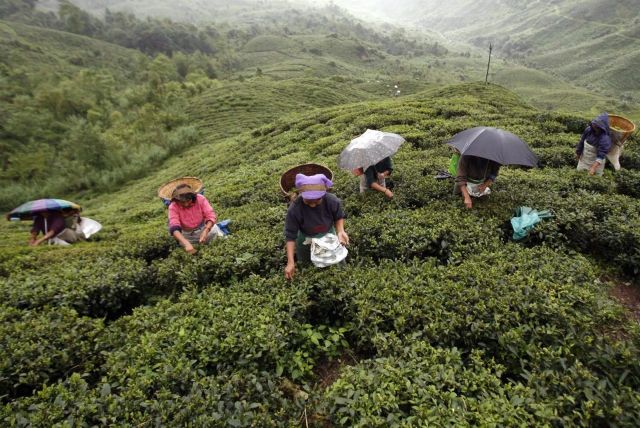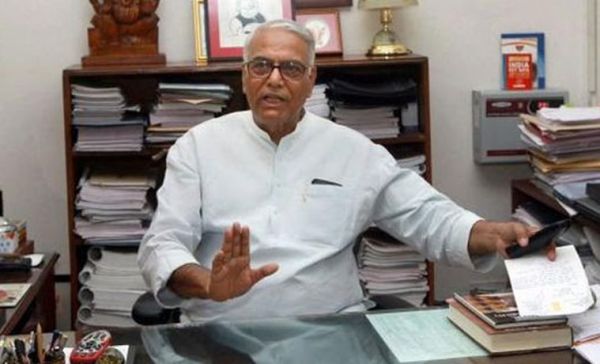
by Editor | May 25, 2021 | Employment, Overseas, World
 Houston : Job hiring will increase 19 per cent in 2018 in the US, helping recent college graduates find employment, said a survey.
Houston : Job hiring will increase 19 per cent in 2018 in the US, helping recent college graduates find employment, said a survey.
According to the Recruiting Trends survey conducted by Michigan State University, the information services industry will see the biggest increase in hiring in 2018, Xinhua reported.
The survey published by local media on Wednesday showed there will be a 15 per cent increase in hiring for bachelor’s degree holders and a 40 per cent increase in hiring for associate’s degree holders.
Those jobs aren’t concentrated on a particular major. Instead, there were more employers saying they were seeking college graduates from any major.
Recruiting Trends, the largest annual survey of employers in the US, relies on information from 3,370 employers from every state.
—IANS

by Editor | May 25, 2021 | Economy, Employment, News, Politics
 New Delhi : With the economy slowing down and joblessness becoming a major issue, the newly-constituted Economic Advisory Council to Prime Minister Narendra Modi on Wednesday identified 10 major priority areas including accelerating economic growth and employment over the next six months.
New Delhi : With the economy slowing down and joblessness becoming a major issue, the newly-constituted Economic Advisory Council to Prime Minister Narendra Modi on Wednesday identified 10 major priority areas including accelerating economic growth and employment over the next six months.
The 10 themes were identified during the first meeting of the council chaired by NITI Aayog Member Bibek Debroy. The council was reconstituted a fortnight ago in what was seen as the government acknowledging for the first time the problem of economic slowdown.
Apart from giving recommendations to the Prime Minister on these issues, the EAC-PM would also focus on the next budget preparation over the coming months, Debroy told reporters here after the meeting.
During the meeting, Chief Economic Advisor Arvind Subramanian focused attention on accelerating economic growth — including investments and exports — using a combination of different policy levers.
The council took stock of the current economic, fiscal and monetary policy environment and resolved to focus on key identified issues.
“We have identified 10 themes that we would initially work on till we have our next meeting one month from now,” Debroy said.
“The 10 themes identified are economic growth, employment and job creation, informal sector and integration, fiscal framework, monetary policy, public expenditure, institutions of economic governance, agriculture and animal husbandry, patterns of consumption and production, and the social sector,” he added.
Debroy said the entire thrust of the council would be on specific implementable recommendations, which would distinguish it from other bodies.
“Our view will be on specific thing you can change,” he said.
The council members would come up with a report in the coming months through consultative processes with ministries, states, private sector and other stakeholders.
They would also come out with specific issue papers to address key concerns, a statement said.
—IANS

by Editor | May 25, 2021 | Employment, Opinions
 By Amit Kapoor,
By Amit Kapoor,
Since the latest growth numbers have come in showing a consistent deceleration in Indias real gross domestic product (GDP) over six consecutive quarters, a cacophony of concerned voices have been heard. The din of criticism both from within and outside the government has grown so loud that Prime Minister Narendra Modi himself has had to intervene in order to defend his economic record. This warrants the question whether the situation is as grave as it is being made out to be. The simple answer is that, in some respects, there is not much that is out of the ordinary about the economic scenario, while in others the trends are cause for concern.
First and foremost are the growth figures. It is not rare for GDP growth to fall for such a long period. In fact, as recently as 2011-12, the GDP had decelerated for exactly six quarters between Q1 of 2011 and Q2 of 2012. By the end of that phase, the growth rate had fallen to a lowly 4.1 per cent. However, in the very next quarter it had bounced back to 6.1 per cent. This is not to make a simplistic argument for complacency, but to point out that growth in developing countries tends to be highly volatile and the Indian economy has shown strong resilience to such downturns. Therefore, a sense of panic is unwarranted and premature.
The second general concern with the economy is slightly more problematic. However, as we will show, it, too, is not out of the ordinary. The level of investment in the economy has become a major cause for concern. As we have pointed out in this column earlier, the level of private and household investment has hit rock bottom and only public investment has been pushing the economy forward. However, World Bank data shows that India’s gross fixed capital formation (GFCF), the leading indicator for investment, has been consistently falling over the last decade. In 2007, India’s GFCF had reached an all-time high of 36 per cent of GDP, close to China’s 39 per cent. Since then, India’s GFCF has fallen to 27 per cent while it has risen to 43 per cent for China. This points to the fact that investment sentiment never recovered in India after the 2008 crisis.
Again, a long-term negative trend is no reason for complacency. According to the RBI’s Annual Report, the non-food credit take-off across the country has been at its lowest in almost 25 years. Low credit take-off indicates that industrialists are unsure of future prospects and have postponed investments owing to weak demand. The twin balance sheet problem that is the leading cause behind the muted investment sentiment needs to be urgently resolved. Fortunately, the government has been proactive on this front and is taken some positive steps to resolve bad debts of big accounts.
Apart from the fact that growth and investment have historically shown poor trends and that we are not in a unique situation, the fundamentals of the economy are significantly stronger than usual. The government has done a good job of sticking to its fiscal deficit targets while the RBI has done the same with inflation. Moreover, the country’s foreign exchange reserves have crossed $400 billion — huge by any standard. To put things in perspective, these reserves equalled 78 percent of India’s total external debt (both short and long term) at the end of March. It may be debatable whether the country needs such a huge trove of reserves, but they are considerable enough to ensure short-run and medium-term stability of the economy.
The most concerning factor of the economy, which also has had a similar long-term history, is unemployment. Lack of jobs is an aspect of the Indian economy that simply can no longer be ignored. Since India missed its own industrial boom and directly ended up becoming a service-led economy, jobless growth has been a problem for long. This is because services are not as labour-intensive as manufacturing. However, the situation has worsened more recently. Between March 2014 and 2016 India experienced an absolute decline in employment, probably for the first time since independence, as pointed out by the Economic and Political Weekly. A fall in the absolute number of jobs for a developing country like India, where 10 million people are expected to join the workforce annually, is disastrous, to put it mildly.
All in all, the falling growth rate will reverse its trend soon as history proves. This will happen over the next few quarters as the after-effects of the twin shocks of demonetisation and GST subside. Investment will hopefully see a revival once the banks find their balance sheets improving. But the problem of job growth will pose the real challenge to the Modi government.
The recent frenzy around the deceleration of GDP growth does not do justice to this structural problem with the economy. Growth rates are understandably volatile and the fall in this period has been accentuated by demonetisation and the implementation of GST. The economy is resilient enough to extricate itself out of these shocks and, in fact, the latter will only be beneficial in the long run. The real problem lies with job creation and it was not a problem created yesterday. The problem of jobs is deep-rooted within the economy and will require equally deep-rooted reforms. The specifics of those reforms are a discussion for another day — but we need to begin by shifting our focus to the appropriate concerns.
(Amit Kapoor is chair, Institute for Competitiveness, India. The views expressed are personal. He can be contacted at amit.kapoor@competitiveness.in and tweets @kautiliya. Chirag Yadav, researcher, Institute for Competitiveness, India has contributed to the article.)
—IANS

by Editor | May 25, 2021 | Corporate Jobs, Employment, News, Private Jobs
 Kolkata : Despite the withdrawal of a shutdown in the Bengal hills, nearly 60 per cent the workers are yet to resume work at the Darjeeling tea gardens, industry officials said on Sunday.
Kolkata : Despite the withdrawal of a shutdown in the Bengal hills, nearly 60 per cent the workers are yet to resume work at the Darjeeling tea gardens, industry officials said on Sunday.
“About 60 per cent of around one lakh workers of the Darjeeling tea industry have not joined work even after the withdrawal of the shutdown,” Darjeeling Tea Association’s Chairman Binod Mohan told IANS.
According to him, the prolonged shutdown might have forced the workforce to venture out of the hills and seek alternate jobs.
“Hopefully, they will come back soon and join work,” he said adding that the annual tea production had been “affected severely” this year and the only thing required to be done is “clearing the jungle” that has grown during the strike.
“There was no work at Darjeeling tea gardens for over 100 days. A significant part of the workforce migrated to other places for alternative jobs. The situation in Darjeeling still remains fragile. It seems workers who got some earning sources outside are taking their time to return,” said Centre of Indian Trade Unions’ General Secretary (tea industry) Zia- Ul-Alam, also convener of Joint Forum of Trade Unions, an umbrella organisation of trade unions working in tea sector.
All stakeholders, including all political parties in the hills, Centre and state government and tea industry players must sit together to build confidence among workers, he said.
Mohan said the tea industry has started making bonus payments to the workers.
After a recent tripartite meeting between workers’ unions, tea garden owners and the government, it was decided the bonus to workers would be paid at 19.75 per cent of the annual wage earnings for the financial year 2016-17.
Due to the shutdown, all plucking and manufacturing operations in the 87 gardens in Darjeeling was suspended and there was no second flush production, considered premium variety contributing to about 20 per cent of the annual industry production and accounting for approximately 40 per cent of the annual revenue, Mohan said.
The industry sought a Rs 230 crore-Rs 240 crore financial support from the government, he added.
—IANS

by Editor | May 25, 2021 | Employment, Interviews

Yashwant Sinha
By V.S. Chandrasekar and Meghna Mittal,
New Delhi : Dissident BJP leader Yashwant Sinha remains unfazed by all the criticism he has faced for his strong critique of the economy and asserts that lack of jobs will be a major issue in the next Lok Sabha elections.
He also feels any attempt at polarising voters on issues like the Ram temple or Article 370 of the Constitution will not work on a country-wide basis.
On demonetisation, which he has been strongly critical of, Sinha says he would have opposed it “tooth and nail” had he been the Finance Minister.
“I feel vindicated (on the Indian Express article attacking the government’s handling of the economy). My first satisfaction is that the issue is being debated. There is quite an informed debate going on. I stand by the facts and figures I quoted. I see no signs so far of a respite for the stressed sectors of our economy.
“RBI has not revised rates. On the fiscal side again, the indications are that even if they don’t go for fiscal expansion, the target of fiscal deficit will be breached the way expenditure is happening this year,” Sinha told IANS in an interview.
Sinha said he made a point on the economy and it was his assessment — and there can be a differing point of view. “But they (government) have not answered a single issue. Out of the council of ministers, my son (Civil Aviation Minister Jayant Sinha) has come out. People said it should be dismissed as a father-son feud. It was reducing it to the level of such flippancy that the serious issue would be lost. I am happy that it has not.”
Asked about whether the BJP would find the going tough in the 2019 Lok Sabha elections and if the ruling party would attempt to polarise votes on issues like the Ram temple, uniform civil code and Article 370, the BJP veteran said it was too early to answer that question as there are about 18 months still left.
“The Indian voter is unpredictable and I should know given the 2004 elections,” he said in a reference to the defeat suffered by his party then after it advanced the polls on the “Shining India” campaign. “New India” is the slogan now, he added.
He said there are two issues in the economy. “One is jobs and (the other) price rise. The Indian voter is worried if my lad has a job or not. That adds to frustration. As far as employment is concerned, it will be a major issue. Household after household will be suffering from unemployment.”
On the question of polarisation, Sinha said, “That kind of polarisation has never worked on a country-wide basis. It may in pockets, but I don’t think it will meet with electoral success. One thing is very certain. Either it (temple construction) will have to be with the consent of the parties concerned or through a court judgement. You will succeed only if there is a conflicting environment. Then only polarisation will take place. And it does not work every time. ”
Admitting that the only good thing about the Modi government is that so far there have been no corruption charges, Sinha said the common man however does not benefit from it. He benefits from cutting-edge administration. “Nothing has changed on that front. For the common man, there is hardly any relief.”
Sinha said there was no clear policy emerging on how to tackle the distress in various sectors. He referred to the way the share market was behaving and called it a case for study. RBI has said it will prevent volatility from market.
“There is a camp which says that rupee should be allowed to depreciate because it is affecting exports. We don’t see any clear policy emerging.
“From the economic point of view, exports have come down, foreign demand is not there. Industrial demand is not there. Overall demand in the economy is not there. That is one reason why private investment is not taking place. There is no generation of fresh capacity. This is serious… because economic growth will take place only on the basis of rising demand. In 3.5 years of this government, there is no demand.”
On demonetisation, Sinha said he would have opposed it tooth and nail had he been the Finance Minister. “It is a long debate what demonetisation can achieve, what it has achieved and what can be achieved through alternative means.
“We are talking of cashless. We have a whole host of measures to go cashless. I think there are 1.8 million cases (of disproportionate deposits). And all these cases will take their own time. If the Income Tax department has to handle these cases, then tax terrorism has returned. We are declaring to the world we are a country of thieves and black money holders.
“By when will we see the outcome of these cases, we don’t know. The fact of the matter is that they have blundered badly as far as this move of demonetisation is concerned.”
To a question on the Goods and Services Tax (GST) and the problems encountered by traders on account of its implementation, he said, “Now suddenly it has become the biggest reform since 1947 and they are tom-tomming it. I am seriously questioning the understanding of taxation that these people possess. Fifteen years (after) I introduced CENVAT with three rates, they introduce GST with five official rates — and with many more cesses. There can’t be more than three rates.”
Sinha said that demand needs to be created and there was need to create an investment for demand for goods first in the economy. “We have to create demand for investment goods. That will lead to more job opportunities, money will flow into people’s pockets through employment and then demand for consumption goods will rise. But this is not happening now.”
(V.S. Chandrasekar and Meghna Mittal can be contacted at chandru.v@ians.in and meghna.m@ians.in)
—IANS

 Houston : Job hiring will increase 19 per cent in 2018 in the US, helping recent college graduates find employment, said a survey.
Houston : Job hiring will increase 19 per cent in 2018 in the US, helping recent college graduates find employment, said a survey.



